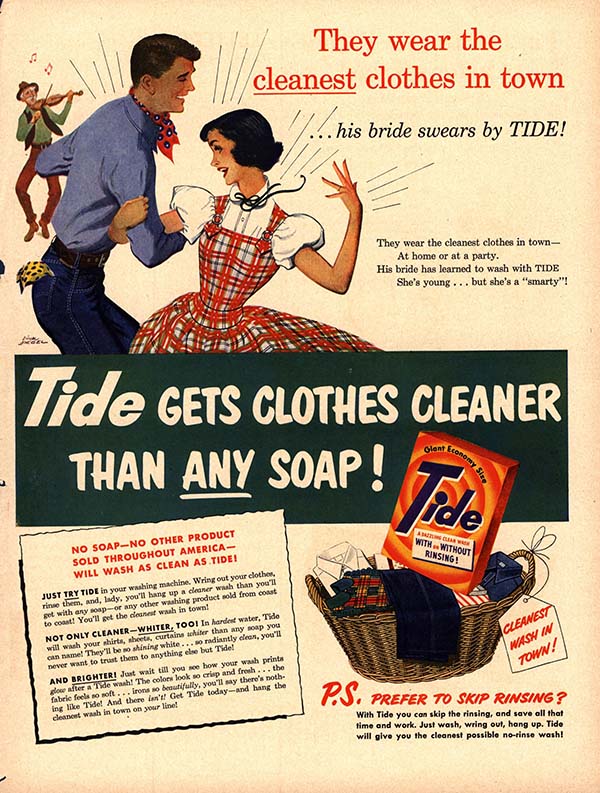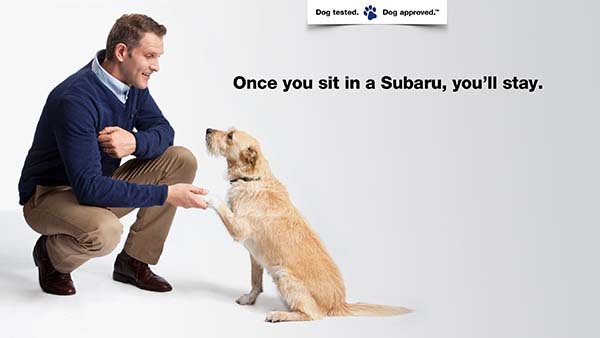Look at the different types of advertising shown in Table 4.2 of the text. Select one product and determine how each type of advertising strategy would be used. Incorporate concepts and examples from this week’s lecture in your post
lecture:
Advertising MessageWelcome to the world of advertising! How many of you think advertisers unfairly influence us and “make” us buy items we do not need, cannot afford, and will not use? If you raised your hand or silently said “I do,” then you are among a majority of people who think advertisers will lie to encourage sales and believe consumers are helpless pawns in the corporate game of profitability.
Nothing could be further from the truth! Advertisers design catchy slogans, phrases, and songs to help us remember the points about a particular item the organization thinks will appeal to us. Did advertisers create the need? No! Did advertisers determine whether or not we wanted an item? Again, no! Although the psychology behind buyer motivation is the focus for another course, advertisers only use what is known to appeal to a specific group of buyers in hopes of affecting sales.
We are entering a world of bright lights, vivid colors, and every sensory perception will become aware when a commercial is on that appeals to something we have decided we need. Why do we want a Mercedes? Good quality? No, superior quality! But does it really cost $30,000 more to manufacturer a Mercedes than, say, a Ford? Most likely not. Then why do we have a mental image of a Mercedes as a premium product? Why, advertisers, of course! Keep in mind as we move throughout our course . . . advertisers work very hard to write messages and music that will appeal to us and motivate us into action.
The objective of advertising is to “inform, persuade, and reminder consumers about business and organizational products and other offerings” (Ogden & Ogden, 2014, section 4.1). There are three message executional frameworks: cognitive; affective; and conative, and how marketers determine which strategy has the highest probability of producing the desired effect on consumer behavior (Clow & Baack, 2012). Parker (2013) stated national universities tend to use more emotional, ego-based ads whereas regional universities tend to use more informational and rational ads. National universities use the affective message strategy, whereas regional universities use the cognitive message strategy. The key is to determine what type of message has the greatest chance of impacting consumer behavior.
Writing an advertising plan requires tedious and detailed concentration on many items. Figure 4.1 (Ogden & Ogden, 2014) in our text lists the ten steps in writing an advertising plan. As you can see from the figure, there is a tremendous amount of work involved in the planning. Today’s marketing managers are being held responsible for ROI within their allocated budget, so time must be taken to get the advertising plan written in a manner for the greatest possible return.
Media Selection
Media planning is written with the five W’s in mind (Ogden & Ogden, 2014): who, what, why, when and where. Following this format will ensure all the relevant information will be included within the media planning. In addition, media planning must take such factors as reach, frequency, and Gross Rating Points (GRP) into consideration. Reach refers to the number of people who will be exposed to the advertising message at least one time while the advertising campaign is running. Frequency refers to the average number of times the audience was exposed to the advertisement during the campaign. Finally, Gross Rating Points combine reach with frequency in an effect to determine the weight of the message (Ogden & Ogden).
With all those ads running, how does an organization’s message get through all the “clutter”? Clow and Baack (2012) suggested the use of celebrities could capture and keep audience attention. In addition to incorporating the seven principles (visual consistency, sufficient campaign duration, repeated taglines, consistent positioning, simplicity, presentation of an identifiable selling point, and creation of an effective flow) (p. 191), the authors suggested an effective manner of overcome the clutter is ad repetition and running ads on various types of media.
In our current economic downturn, media agencies are scrambling to meet the advertising needs of their customers – customers who now may not have enough money to pay for the media contract still in effect (“Media Agencies,” 2008). Organizations must now deliver results from advertising on an increasingly decreasing advertising budget, a stressful situation for the organization as well as the media agency. For example, KFC has set high standards for their media agency and expect delivery (“Meet,” 2008).
With so many choices available, which media might be the most effective in attracting an organization’s targeted market segment? According to Jeter (2003), an auto advertisement works 50% of the time. But which 50% is working? And in which advertising medium? A common theory, although not supported by scientific methodology, is some media work better than others. Vincent and Vincent (1996) claim television ads have a significant effect on buyer motivating behavior, while magazines are most effective for creating brand awareness.
Nowak, Cameron, and Krugman (1993) declare a survey delivered by mail and telephone actually assist advertisers in which media is most effective for an industry. Their findings indicate audience reach and specific targeting of a desired market segment are most important when selecting an advertising media. Cost is secondary to audience reach.
Yet, how does an advertising executive determine the “best” types of media? Kassaye and Vaccaro (1991/1992) suggested that as the demographics and lifestyles of consumers change, the traditional selection of media must be challenged and reformed. In addition, the cost of such advertising must be considered. Our text does a very good job of discussing reach, frequency, opportunity to see, gross ratings, etc. Does it make sense to advertise in a daily print newspaper if you are advertising about a product targeted toward a Generation Y consumer? Of course not! Instead, advertising professionals must determine a venue where the targeted market segment congregates. Where might a media venue be that offers the greatest opportunity of reaching Generation Y consumers? We will discuss this issue in greater detail within our discussion forums. In conclusion, which media is “best”? In short, choose an advertising media for an organization’s advertising message that has the greatest probability of being read, seen, or heard by the organization’s targeted market segments.
Forbes School of Business Faculty
References:
Clow, K. E., & Baack, D. (2012). Integrated advertising, promotion, and marketing communications (5th ed.). Upper Saddle River, NJ: Pearson Education, Inc.
Jeter, L. W. (2003, September 15-21). Auto ads pack punch, but which medium works best? Mississippi Business Journal, A15.
Kassaye, W. W., & Vaccaro, J. P. (1991/1992, Winter). Increasing advertising effectiveness through better selection of the media. Review of Business, 13(3), 40.
Media agencies: Time for a new model? Marketing Week, 27.
Meet the client (2008, October 14). Media Week, 17.
Nowak, G. J., Cameron, G. T., & Krugman, D. M. How local advertisers choose and use advertising media. Journal of Advertising Research, 33(6).
Ogden, J. R., & Ogden, D. T. (2014). Utilizing a strategic marketing approach to managing marketing communications. San Diego, CA: Bridgepoint Education, Inc.
Parker, B. T. (2013). Institutional advertising in higher education: A comparison of creative strategy, message content, and executional devices in television commercials from national and regional universities. American Academy of Advertising. Conference Proceedings (online): 199. Lubbock, TX: American Academy of Advertising.
Vincent, M. & Vincent, A. (1996, June). Which medium works best? Admap, 31(6), 12.
| Table 4.2 Main types of advertising strategy |
| Strategy |
Example |
| Affective. This includes the reliance on emotions to influence consumers. Humor and fear are typical approaches with an affective strategy. |
| Anti-smoking campaign—This ad from the CDC uses viewer’s emotions such as fear and love for family, to influence the consumer to quit smoking. |

AP Photo/CDC
|
|
| Brand Imaging. In brand imaging, the advertiser tries to create an overall image or personality for the brand or product based upon psychological claims. |
| Stuart Weitzman—This ad associates the brand with sexy high-end fashion. |

PRNewsFoto/Stuart Weitzman
|
|
| Unique Selling Proposition (USP). This strategy looks at a physical feature of a product or service that is stronger or better than the competition. There must be proof of superiority when utilizing this strategy. This strategy gets to the concept of a value proposition; generate value for the product or service then communicate that value to the audience. It’s always a good idea to know the USP and value proposition even if different strategy is undertaken. |
| Tide® Detergent—This ad uses research to substantiate the product claims that Tide gets clothes cleaner than any other soap. |

Advertising Archive/Courtesy Everett Collection
|
|
| Resonance. In a resonance strategy the advertiser attempts to connect with the consumer utilizing a consumer’s experiences with a product. The idea is to communicate to the consumer that this brand is the “one to buy.” A show-and-tell execution often accompanies this strategy. |
| SodaStream—This is an image still from a SodaStream commercial that depicts people who are typical of the target market to show-and-tell how fun and easy it is to use the product. |

AP Photo/SodaStream
|
|
| Product or Brand Positioning. This is a long-term strategy that relies on relationship marketing. It allows the advertiser to develop a unique position for its brand and to “position” the brand in the consumer’s mind in relation to the brands offered by competitors. This strategy works well with many consumer products as consumers tend to rank brands and products in their minds based upon preconceived ideas and notions about the product such as quality, price, or longevity. |
| Subaru—Subaru has positioned its brand as one for young, active consumers who care about their families and pets. Loyalty is a key component of their brand positioning strategy. |

PRNewsFoto/Subaru
of America, Inc.
|
|
| Generic. When entering a new market, advertisers have little information to help them assess the environment and may opt for a generic strategy. This strategy provides a straightforward product benefit claim. There is no claim of superiority over the competition. This strategy is very effective in situations where there is no or little competition. |
| Shine ‘n Jam PomWave—In this ad the company explains why the product should be purchased. The ad depicts a person with styled hair who is typical of the target market. |

PRNewsFoto/Ampro Industries, Inc.
|
|







